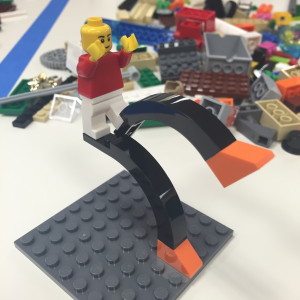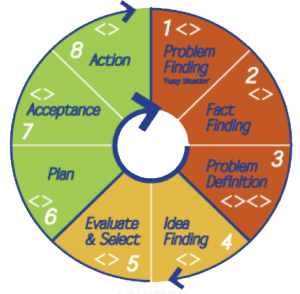Facilitate Innovative Problem Solving with LEGO® SERIOUS PLAY® and Applied Creativity
Innovative results don’t just happen by sitting down with the team and trying to think of ways doing things differently. According to the Basadur Centre of Applied Creativity, there is a basic formula:
INNOVATIVE RESULTS = the right CONTENT + the right PROCESS + the right PROCESS SKILLS + the right TOOLS + the necessary thinking STYLES.
A new car isn’t built by dumping all the parts on the floor in a pile and saying ‘Ok team, go to it’. No, we use an assembly line. Yet, this is often what we do in meetings and projects. When we walk systematically through a process that leads us into and out of the divergent and convergent thinking skills needed at each stage, from finding and defining the problem, to finding and formulating a solution and effectively implementing it, we have a much higher chance of effectively and efficiently solving our problems and challenges.
Then there is the 10-50-90 rule of thumb. We remember 10% of what we hear, 50% of what we see and 90% of what we do. This is where LEGO ® SERIOUS PLAY® (LSP) comes in.
As explained in a previous post found here, LSP is a methodology that always creates 100% engagement from participants, and frees us from our regular thinking patterns that can often inhibit us from letting go into a creative space.
Bringing in ‘hand-powered engagement’ from the entire team lifts the level of insight and creative dialogue at several key stages of the problem solving process. Is the entire team understanding the problem in the same way? What perspectives and insights can each person contribute to understanding the situation? We know that given the same resources, each person will produce something different. When the problem is complex, we increase our chances of an effective and innovative solution when we can glean all the information we can. This is where most processes fall short – defining the actual problem. Many teams have a tendency to jump straight to solutions.
Once the team has identified its top potential solutions, we can enter into an LSP build of each solution and explore what each might look like in different ways. We can even run scenario testing with the models to explore potential impacts and barriers.
Does your team have a complex challenge you need to work on? For more information about exploring your team’s cognitive diversity in the creative problem solving process, contact Fiona or Lise. Bring everyone’s full self to solving the challenge at hand.


